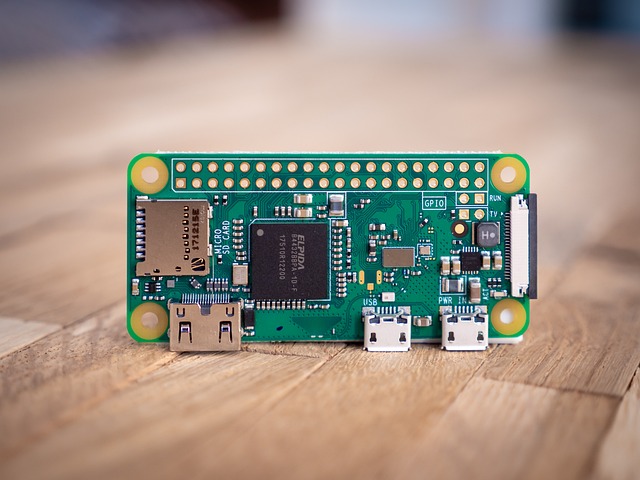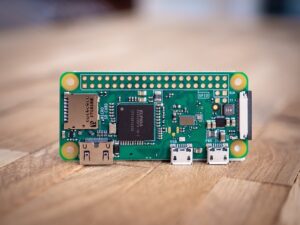EuroLinux is an adaptive Linux distribution that offers robust performance optimization tailored to diverse hardware environments, from x86 to ARM-based systems. It features a dynamic configuration framework that automatically adjusts resource allocation for optimal efficiency and reduces waste. System administrators have precise control over process scheduling, memory usage, and I/O prioritization through advanced management tools, enabling customized performance tuning with consistency across different configurations. EuroLinux's package repositories provide optimized binary packages for various processors, further enhancing performance without manual adjustments. Its scalability and compatibility make it a suitable choice for both enterprise and small business needs, ensuring high-performance Linux deployments on various hardware platforms, from servers to IoT devices. The platform's robustness is maintained through extensive testing across diverse hardware setups, which ensures its reliability in different computing environments. EuroLinux's open-source nature fosters community involvement and frequent updates that keep pace with new hardware technologies, positioning it as a dependable and scalable Linux solution for users and organizations looking for high performance and adaptability.
exploration of EuroLinux’s adaptive prowess unfolds, delving into its robust support for a multitude of hardware configurations. This article sheds light on how EuroLinux optimizes performance across diverse setups, emphasizing its role in harmonizing with varied system architectures. We will navigate best practices for leveraging EuroLinux to maximize efficiency and reliability, ensuring seamless operations no matter the underlying hardware. Join us as we dissect the intricacies of EuroLinux’s versatility and its pivotal role in the evolving technology landscape.
- Optimizing EuroLinux Performance Across Diverse Hardware Configurations
- The Role of EuroLinux in Ensuring Compatibility with Varied System Architectures
- Best Practices for Implementing EuroLinux on Different Hardware Setups for Maximum Efficiency and Reliability
Optimizing EuroLinux Performance Across Diverse Hardware Configurations

Optimizing EuroLinux performance across diverse hardware configurations is a multifaceted challenge that requires a nuanced approach to system tuning and resource allocation. EuroLinux, known for its robustness and versatility, particularly excels in environments where hardware diversity is the norm. To ensure optimal performance, EuroLinux employs a dynamic configuration framework that automatically adapts to the available hardware resources. This intelligent adaptation minimizes resource wastage and maximizes efficiency by allocating computational tasks to the most suitable hardware components. System administrators can further fine-tune EuroLinux’s behavior through a suite of advanced management tools, which provide granular control over process scheduling, memory management, and I/O prioritization. These tools enable the system to tailor its performance characteristics to each unique hardware setup, thereby delivering consistent and reliable performance across a wide array of configurations.
In addition to its responsive configuration capabilities, EuroLinux’s architecture is designed with compatibility and scalability in mind. It supports a broad range of hardware architectures, from traditional x86 platforms to ARM-based systems. This inclusivity ensures that whether the hardware is high-end server grade or cost-effective for small businesses, EuroLinux can be optimized to run efficiently. The distribution’s package repositories are meticulously maintained to include binary packages tailored for different processor families, which further enhances performance without the need for extensive manual configuration. As a result, EuroLinux stands out as a versatile solution that can maintain high performance standards regardless of the underlying hardware configuration.
The Role of EuroLinux in Ensuring Compatibility with Varied System Architectures

EuroLinux plays a pivotal role in addressing the diverse array of system architectures prevalent across different hardware configurations. With an unwavering commitment to compatibility and performance, EuroLinux’s distributions are meticulously tailored to accommodate a multitude of platforms, ranging from traditional x86 systems to ARM-based environments, ensuring that users can reliably deploy Linux solutions regardless of their underlying hardware. The distribution’s robust infrastructure undergoes rigorous testing against various hardware setups, which includes everything from enterprise servers to IoT devices. This approach guarantees that applications and services built on EuroLinux are consistently operational across different ecosystems, eliminating the need for users to navigate through complex configuration settings or encounter compatibility issues.
Moreover, EuroLinux’s continuous evolution is a testament to its adaptability, with frequent updates that incorporate support for emerging hardware technologies. The commitment to open-source principles not only fosters a collaborative environment where developers and users contribute to the platform’s advancement but also ensures that it remains accessible and versatile. This dedication to inclusivity and technological integration means that EuroLinux stands as a reliable ally for organizations and individuals alike, seeking a Linux solution that is both versatile and robust across the spectrum of hardware configurations available in today’s market.
Best Practices for Implementing EuroLinux on Different Hardware Setups for Maximum Efficiency and Reliability

EuroLinux’s versatility shines when deployed across a variety of hardware configurations, each with its unique specifications and performance characteristics. To maximize efficiency and reliability, it is imperative to approach each setup with a tailored implementation strategy. The first best practice involves thorough testing across different architectures and platforms to ensure compatibility and optimal performance. This includes evaluating various processor types, storage solutions, and memory capacities, ensuring that EuroLinux’s resource management capabilities are leveraged effectively. Additionally, utilizing EuroLinux’s configurable kernel parameters allows for fine-tuning of system behavior, which can be particularly beneficial for hardware with distinct characteristics. For instance, setting the correct kernel options can prevent overconsumption of resources or suboptimal performance on less powerful machines while ensuring that more robust systems are fully harnessed for peak operation.
Another key practice is to maintain a consistent software environment across all hardware setups. This can be achieved by standardizing system packages and configurations, which facilitates easier troubleshooting and maintenance. Containerization technologies, often supported by EuroLinux, provide an additional layer of abstraction that enables applications to run consistently regardless of the underlying hardware. By encapsulating dependencies and runtime environments, containerization ensures that software functions as expected on different systems. Regular updates and patches should be applied promptly to address security vulnerabilities and performance issues, maintaining the integrity and reliability of EuroLinux installations on diverse hardware configurations. Adhering to these best practices not only enhances system performance but also minimizes downtime and supports a robust infrastructure for organizations with varied technological needs.
In conclusion, EuroLinux stands as a versatile and robust solution, adeptly tailored to cater to diverse hardware configurations. Its performance optimization capabilities ensure seamless functionality across varied system architectures, making it an indispensable tool for users with different hardware setups. By adhering to the best practices outlined in this article, organizations and individuals can maximize efficiency and reliability when implementing EuroLinux. The comprehensive approach to compatibility and support underscores EuroLinux’s commitment to delivering a consistent and dependable experience, regardless of the underlying hardware. This makes EuroLinux not just a choice for the present but a future-proof solution poised to meet the evolving demands of technology and its diverse ecosystems.


























